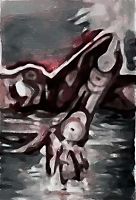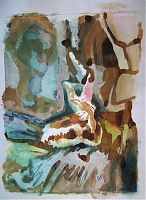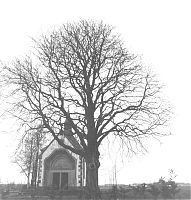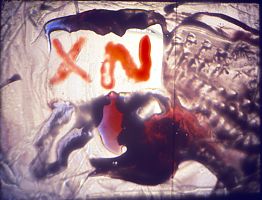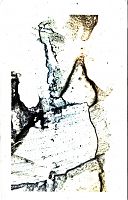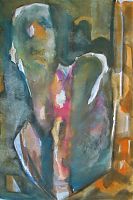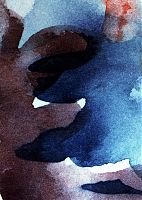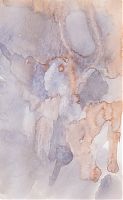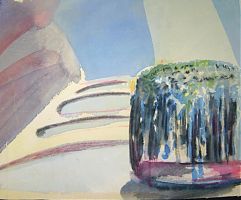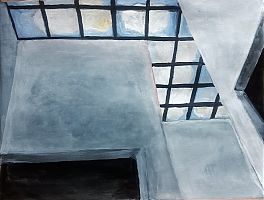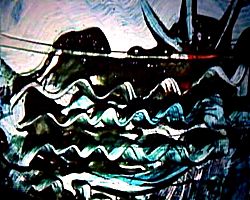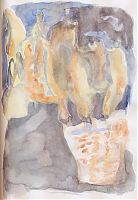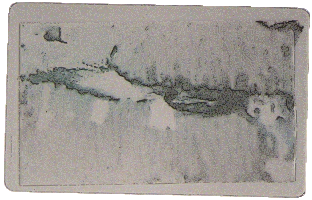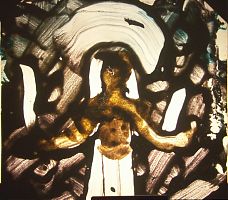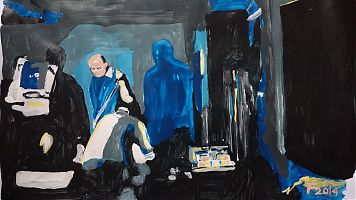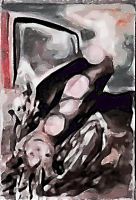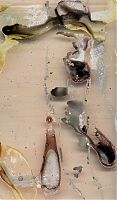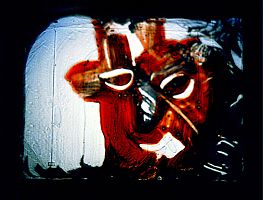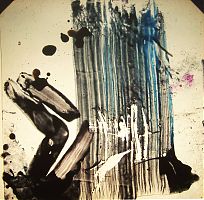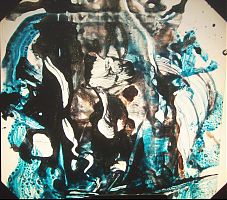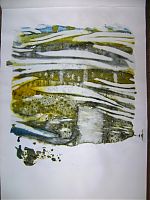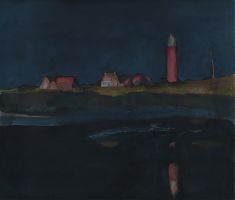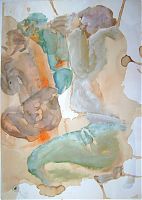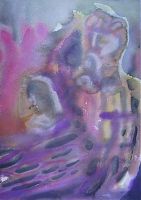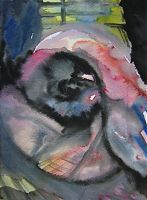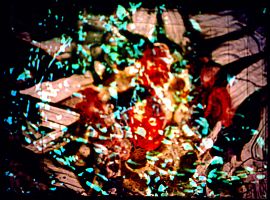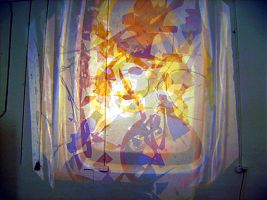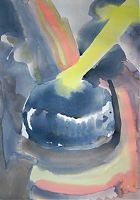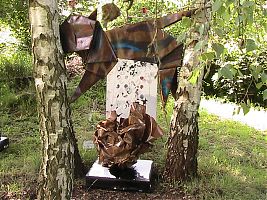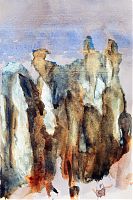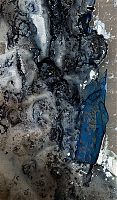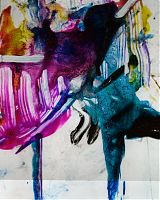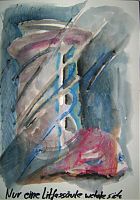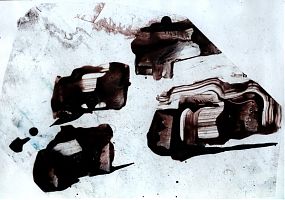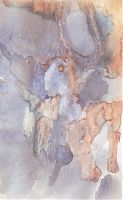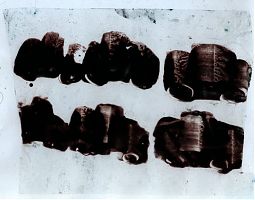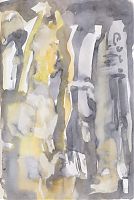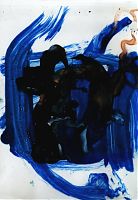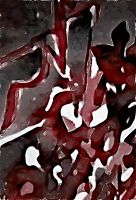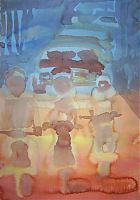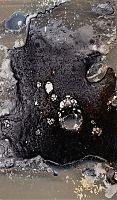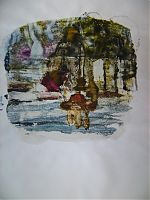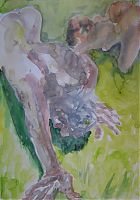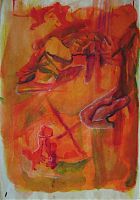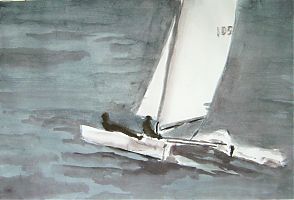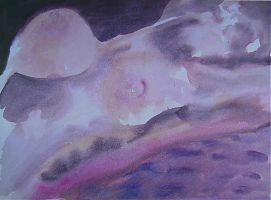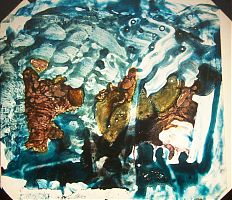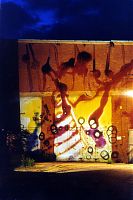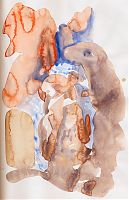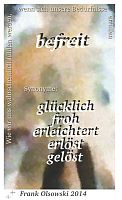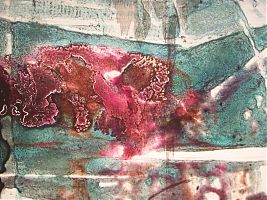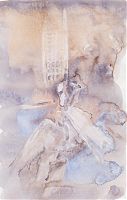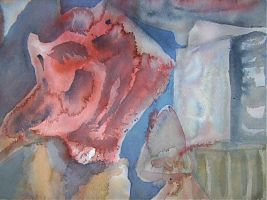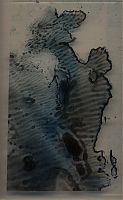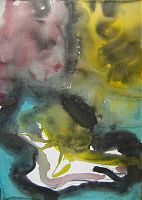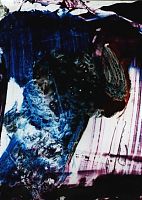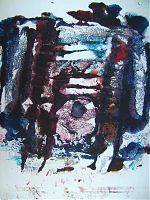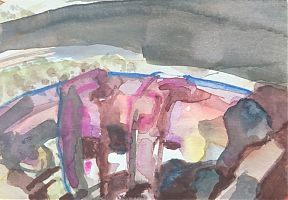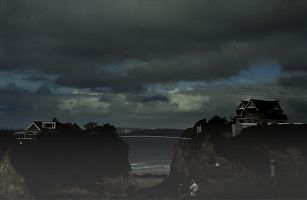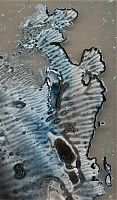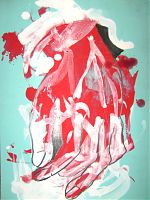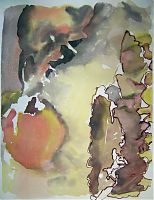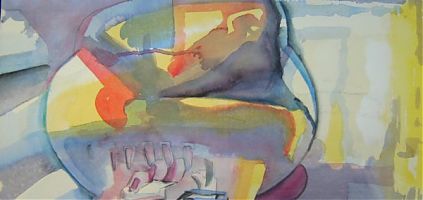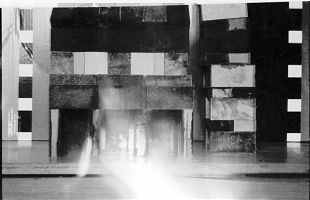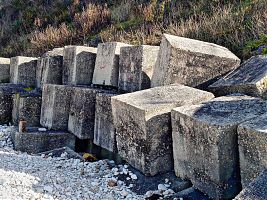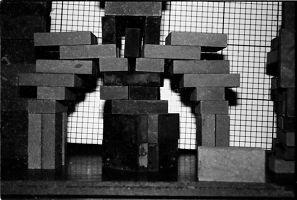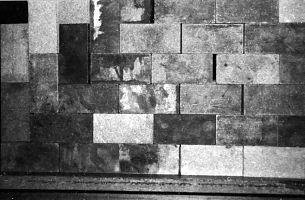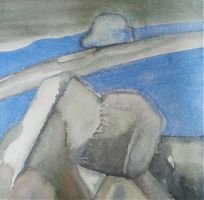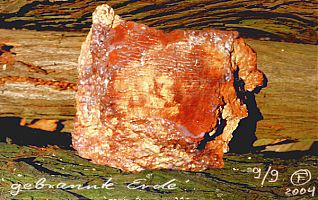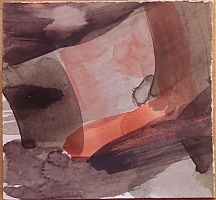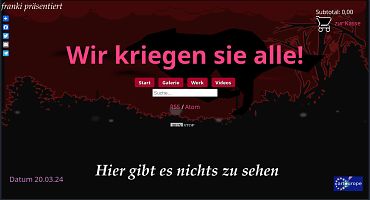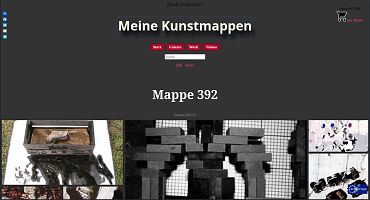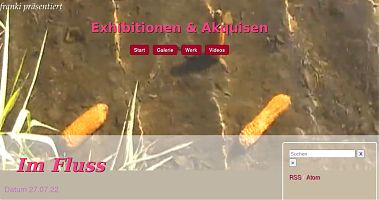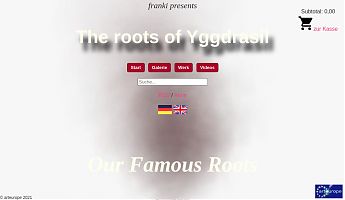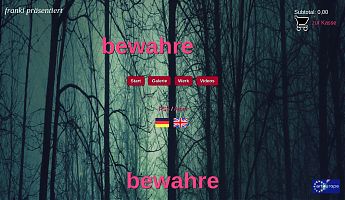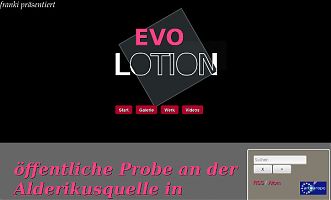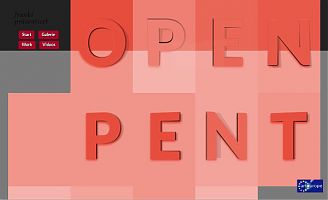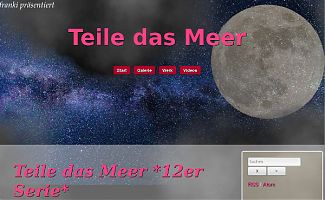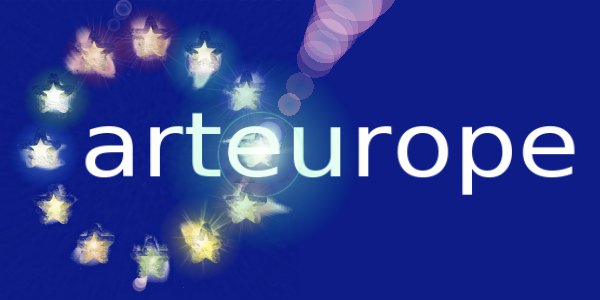Blue sketchbook sheet 17
Datum
Richscribble
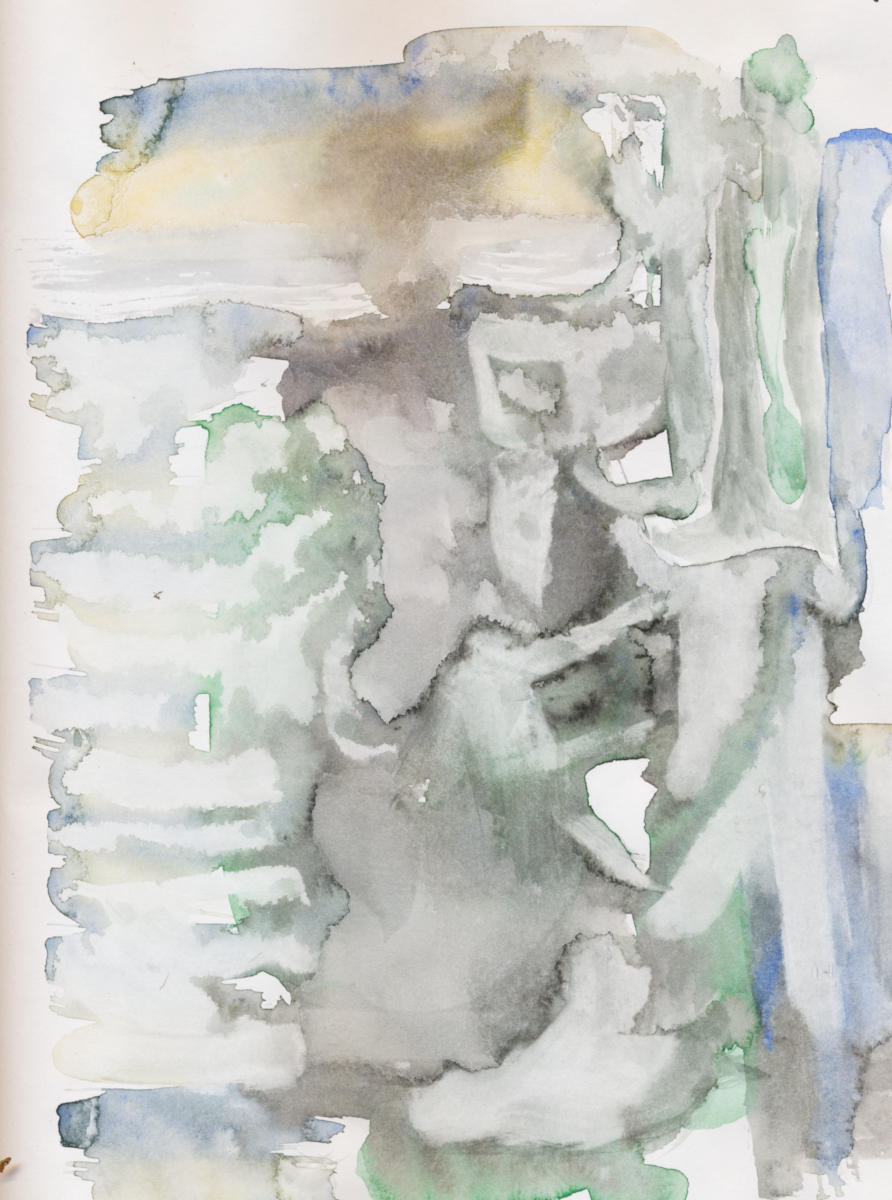
Blaues Skizzenbuch Blatt 17, 2008, ca DIN A4 , Aquarell auf Papier
What are Richscribbles?
Richscribble watercolors from johann franki's blue sketchbook follow the label 'Make big what you like'. All original sheets from the sketchbook were denied the contrasting "wash", the final overpainting that introduces the shadows to create depth and highlight the light areas, in order to avoid a restrictive color and design definition. This process is only carried out with editors on the PC during digital processing and thus preserves freedom of interpretation, which only receives its final definition in a separate print file.
Process
A high-resolution scan is made of the rich scribble and the digital result is interpreted and processed.
Now the most beautiful part of the work begins, because coherent, harmonious and exciting details are sought, which have a strong character as cut-outs, details are refined and finally scaled to the size of the DIN A1 format.
Sheet 17 from the blue sketchbook from 2007 contains a variety of interesting arrangements and figurative artifacts.
A richscribble is an often overdrawn sketch from which I cut out appealing areas and process them further.
This Richscribble series in particular is kept very delicate and pale in order to be able to enhance the finest nuances afterwards and retain the greatest possible freedom of design. Each brushstroke during watercolor painting defines the picture a little more, it can no longer be removed. Before I start, I usually only have a color concept of three to six different colors prepared in small pots, which will provide good contrasts, even if they are applied lightly and delicately. After the first wash has dried, the composition should still be open to interpretation in many different directions.
Light, delicate scribbles are ideal for digital processing. I mainly use two automatic tools from the free, open-source image editing program Gimp. In the three thumbs below, I show the original drawing as it corresponds to the page from the sketchbook as the first image, the original after an automated white balance as the second and with an automated contrast spread as the third and save them in individual layers.
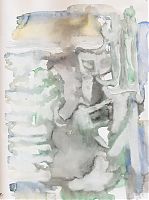
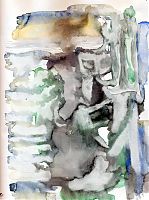
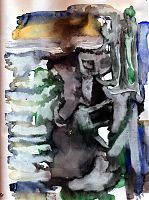
Orginalbild, Orginal mit zusätzlichem Weißabgleich und Orginal mit Kontrastspreizung
Now I can cut out areas of a layer so that the layer below becomes visible in the section.
A particular challenge is the scaling of a sometimes tiny selected area to a much larger image file. The sharpness must not be lost in the process. In the beginning, however, there are only the two automatic functions already mentioned, which can either emphasize contours or lighten or darken areas.
With these 3 basic interpretations, original, white balance and contrast spread, I set out in search of independent compositions. Here I show you three notched areas that I was able to bring to a size of approx. 80 cm x 55 cm, DIN A1.
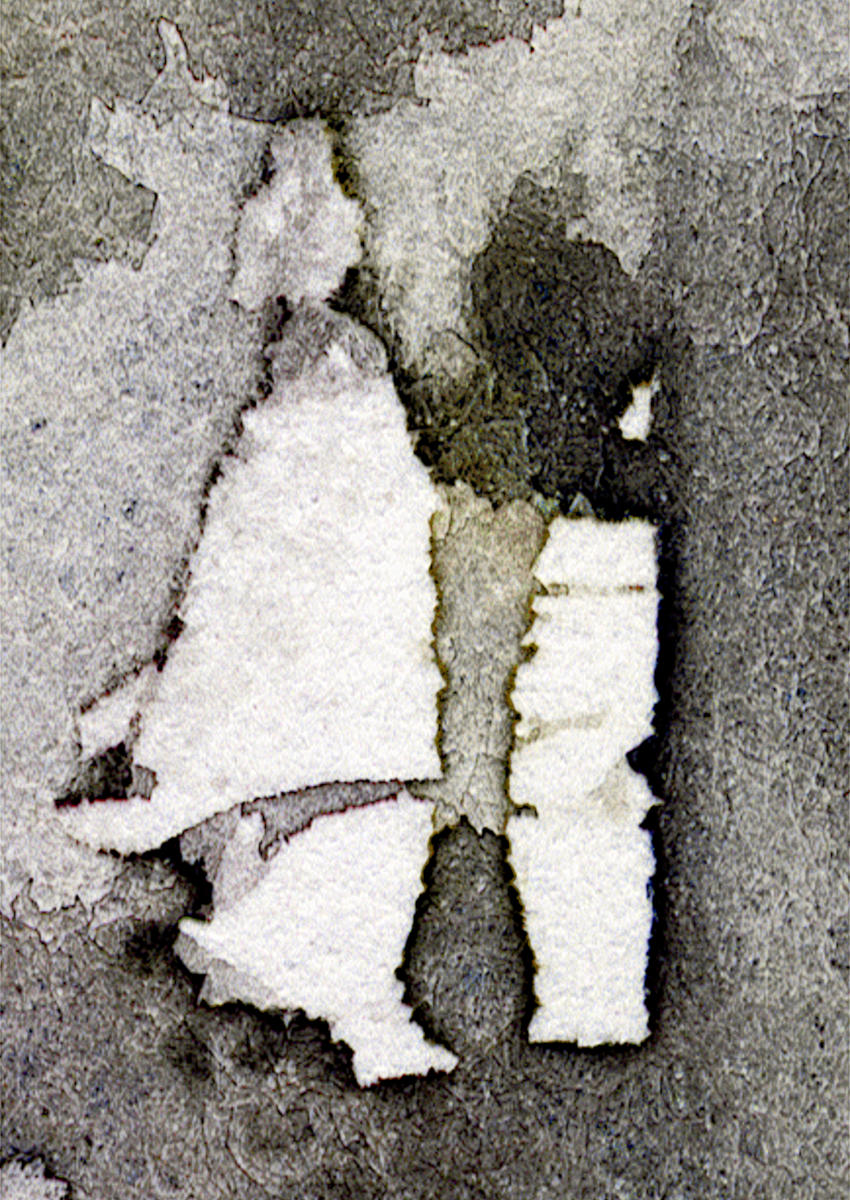 Blaues Skizzenbuch Blatt 17, 2024, Ausschnittinterpretation Nr. 3, vorgesehen für Print in DIN A1
Blaues Skizzenbuch Blatt 17, 2024, Ausschnittinterpretation Nr. 3, vorgesehen für Print in DIN A1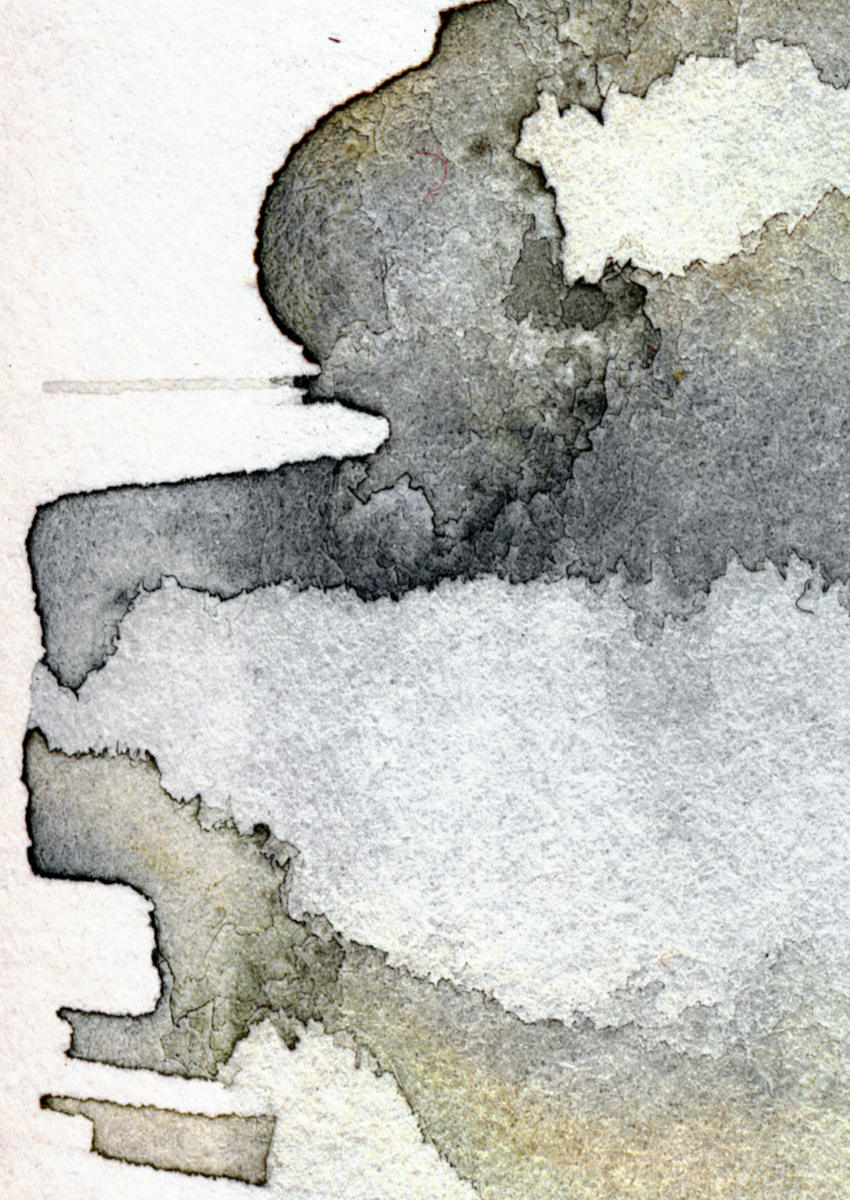 Blaues Skizzenbuch Blatt 17, 2024, Ausschnittinterpretation Nr. 2, vorgesehen für Print in DIN A1
Blaues Skizzenbuch Blatt 17, 2024, Ausschnittinterpretation Nr. 2, vorgesehen für Print in DIN A1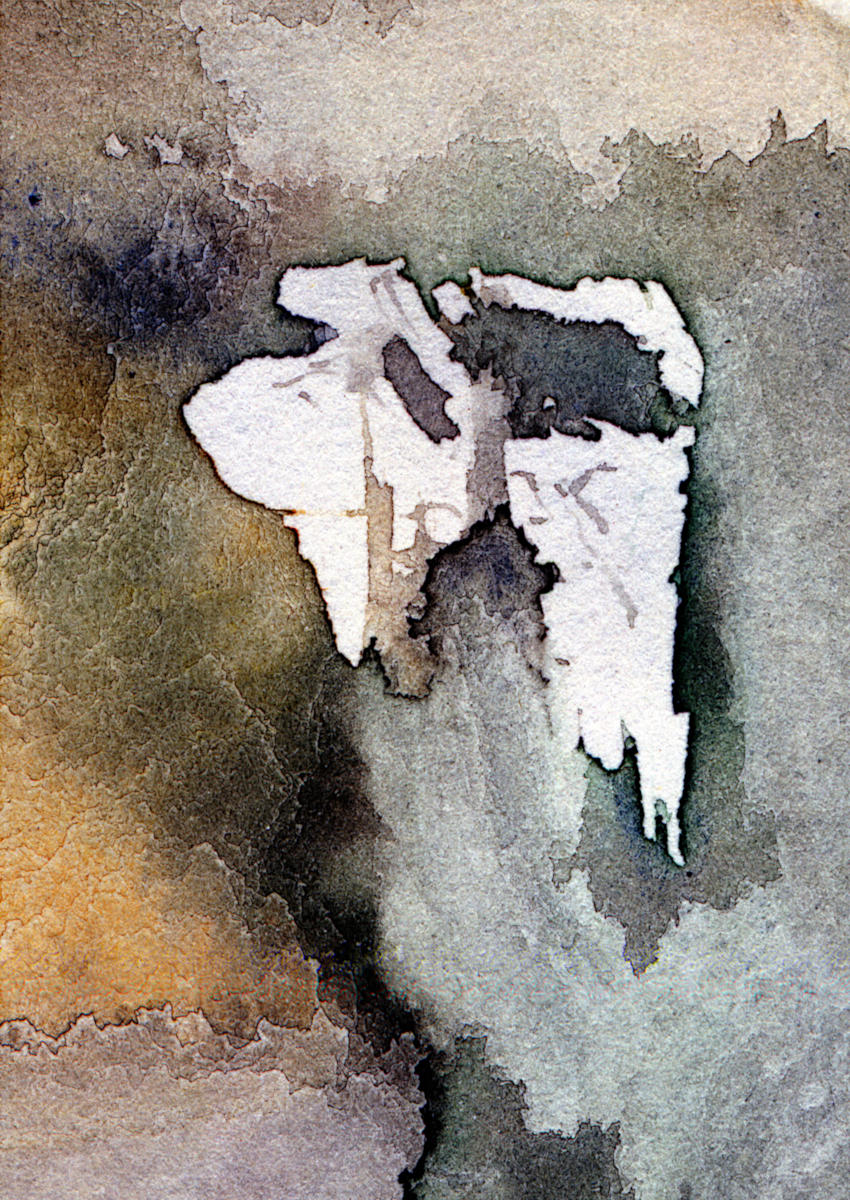 Blaues Skizzenbuch Blatt 17, 2024, Ausschnittinterpretation Nr. 1, vorgesehen für Print in DIN A1
Blaues Skizzenbuch Blatt 17, 2024, Ausschnittinterpretation Nr. 1, vorgesehen für Print in DIN A1I have framed the three places in red from which I will have the DIN A1-sized cut-outs printed.
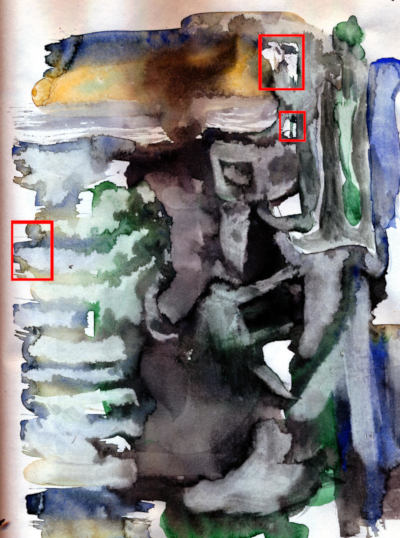
Here are two further interpreted excerpts from sheet 17. Find for yourself the passages used in Richscribble sheet 17.
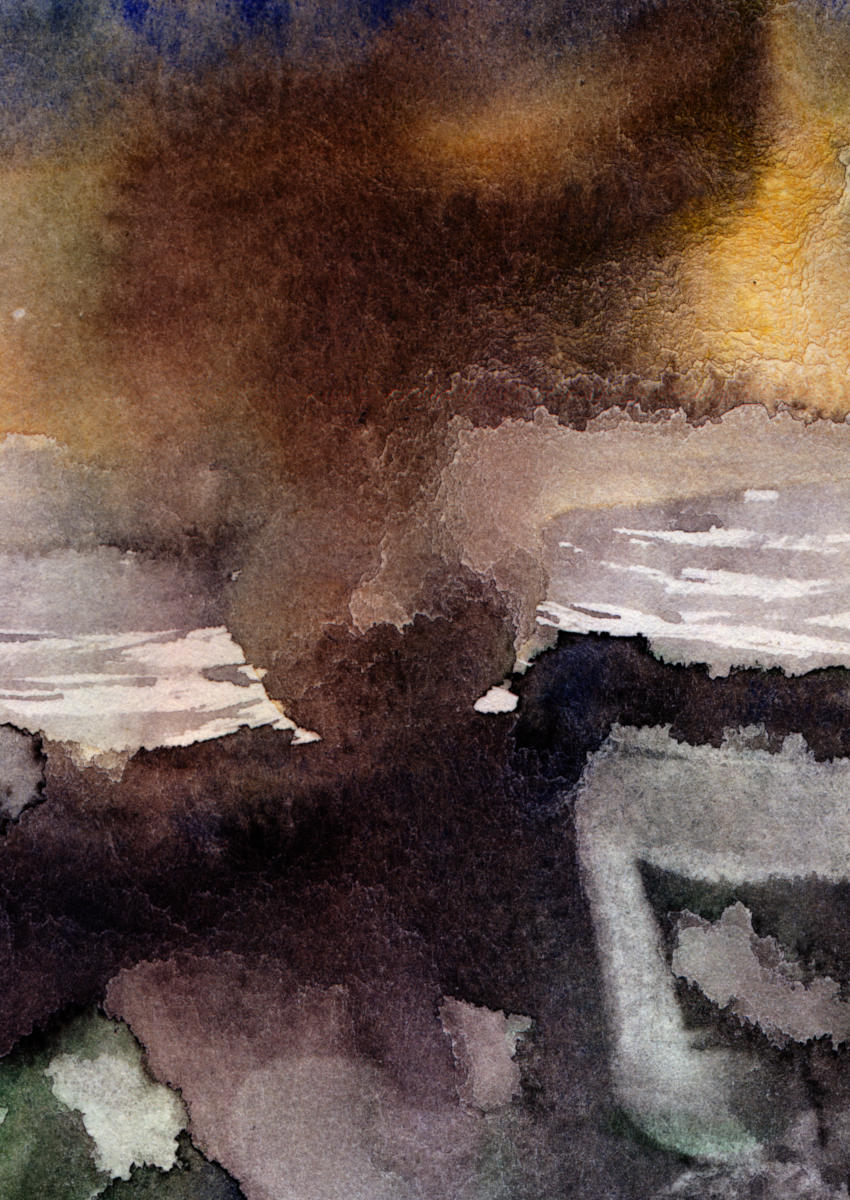 Blaues Skizzenbuch Blatt 17, Interpretation Ausschnitt Nr. 4, Zülpich 2024
Blaues Skizzenbuch Blatt 17, Interpretation Ausschnitt Nr. 4, Zülpich 2024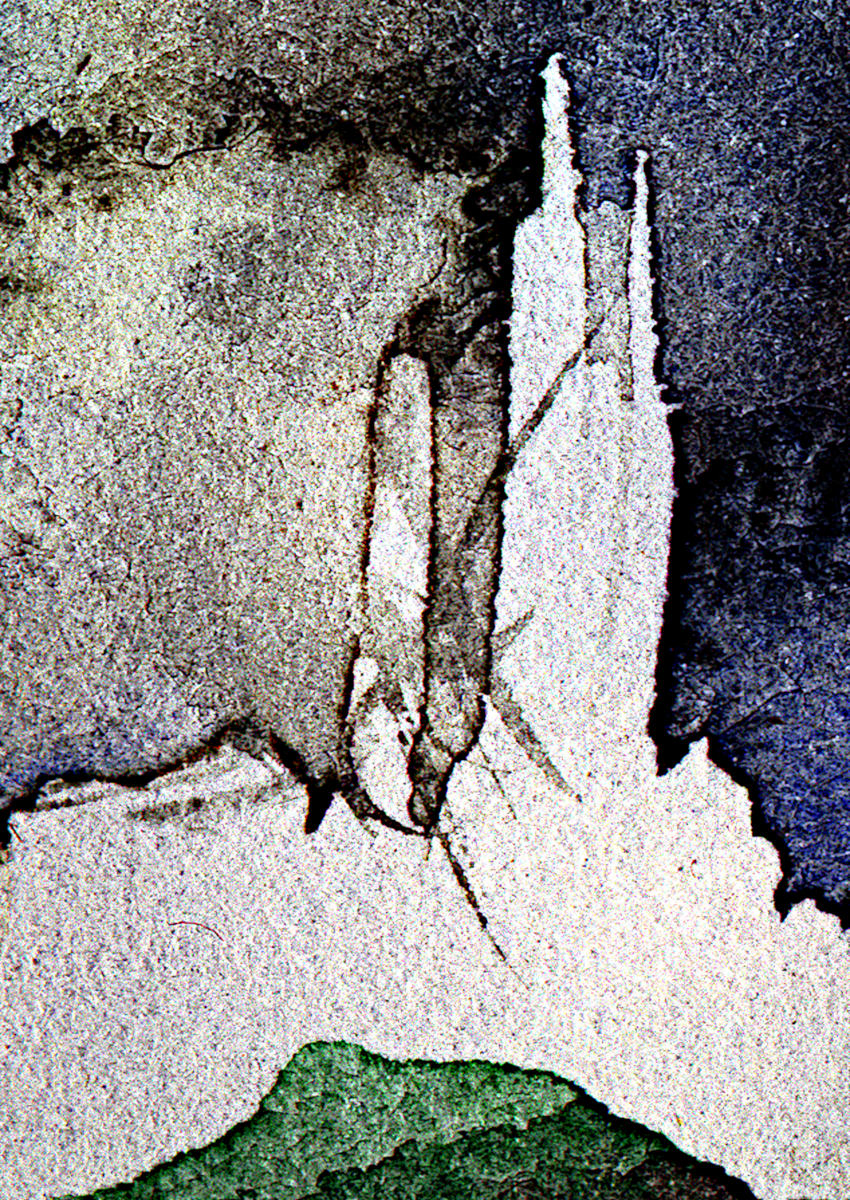
Blaues Skizzenbuch Blatt 17, Interpretation Ausschnitt Nr. 6, Zülpich 2024
I was not able to preserve the fiber structure of the leaf in detail no. 6, as I did in detail no. 3. Each detail that is to be enlarged requires its own treatment. Even the order of the processing steps can influence the result. Nevertheless, I will have No. 3 printed and publish the result here.
Artifact interpretations
Since fall 2025, I have been working on watercolor interpretations of these enlarged artifacts from the Blue Sketchbook. Further examination has allowed me to understand what exactly motivated me to choose this particular detail from Rich’s scribbles. One of my first works concerns page 17.1, in which I focused mainly on the colors.
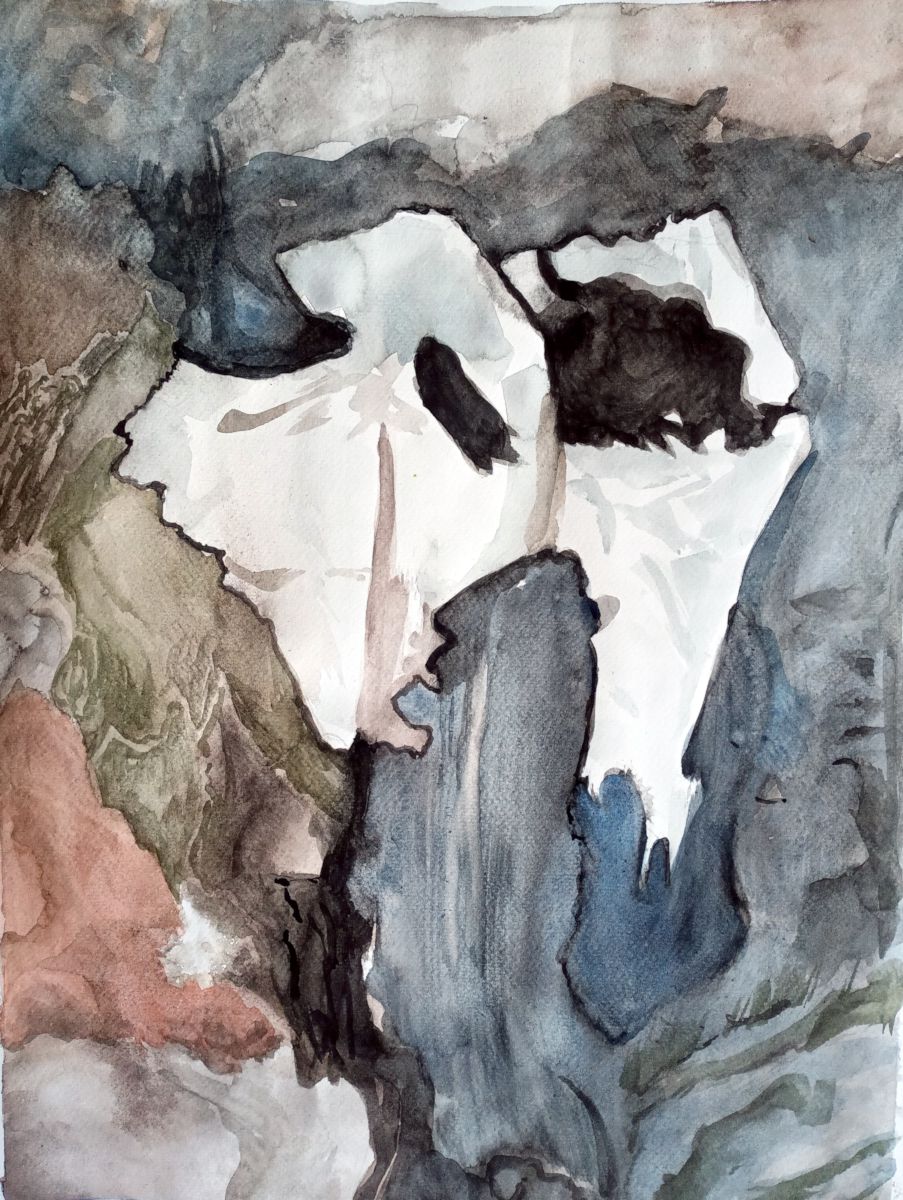 Blatt 17.1 aus dem "Blauen Skizzenbuch", Artefaktinterpretation in Aquarell, 48cm x 36 cm 200g/m², Zülpich 2025
Blatt 17.1 aus dem "Blauen Skizzenbuch", Artefaktinterpretation in Aquarell, 48cm x 36 cm 200g/m², Zülpich 2025The colors are muted but vibrant. The lines of the light-colored artifact, which looks like a mask, are depicted in a more compact manner.
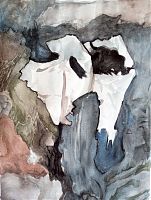
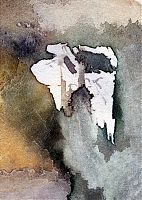
The white shape on the right appears more stable in the template, and the angle of the right line has a greater presence, making it more meaningful and voluminous. In the watercolor, this image detail “starts” loudly and then fades away somewhat meaninglessly, but this is also due to the shadow area. Although I like my interpretation, I would pay more attention to these two details in a further work. On the other hand, the colors of the interpretation and the somewhat playful texture of the background appear much more vivid.
Another interpretation concerns artifact sheet 17.6
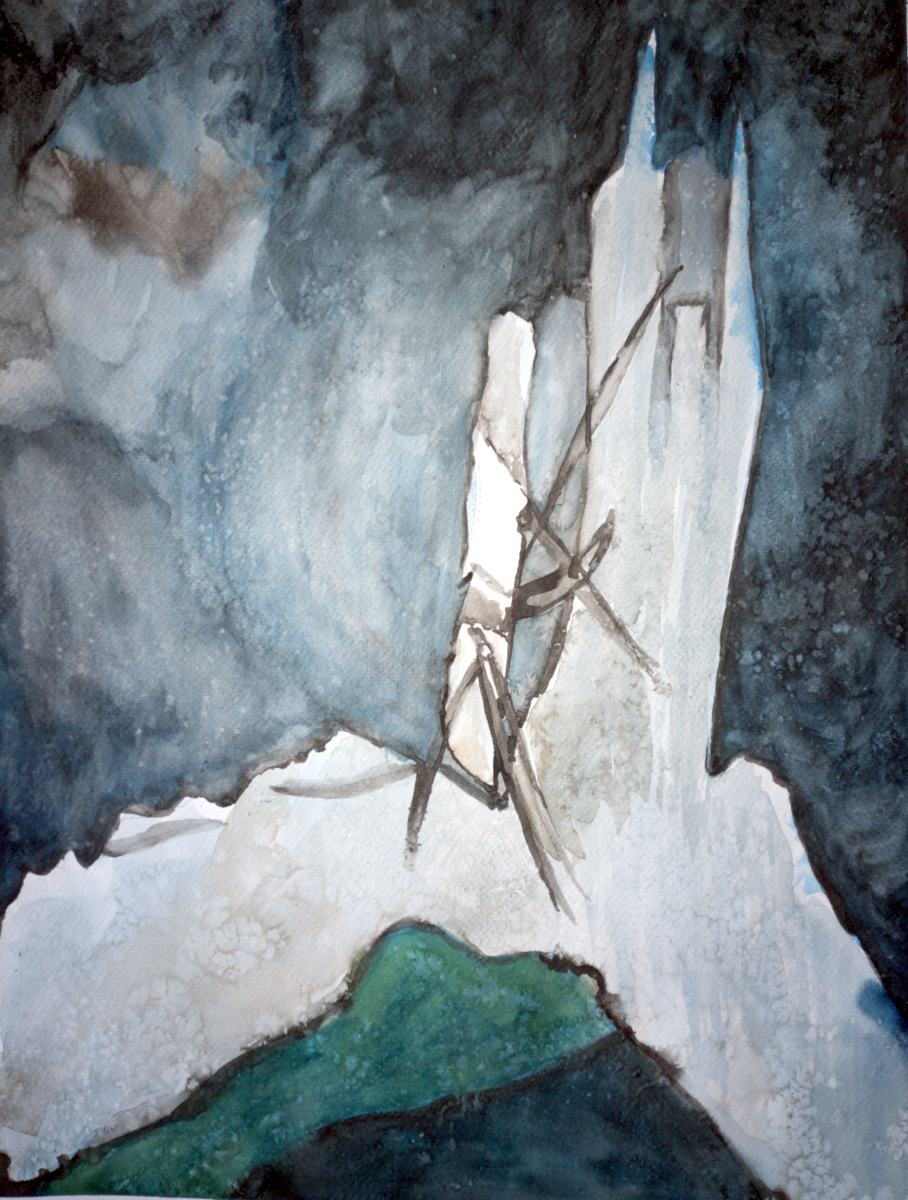 Blatt 17.6 aus dem "Blauen Skizzenbuch", Artefaktinterpretation in Aquarell, 48cm x 36 cm 200g/m², Zülpich 2025
Blatt 17.6 aus dem "Blauen Skizzenbuch", Artefaktinterpretation in Aquarell, 48cm x 36 cm 200g/m², Zülpich 2025Loose and with a slightly warmer blue, I find that I like the template because the blue tone of the background appears more metallic.
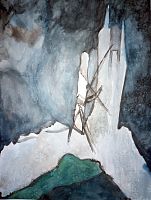
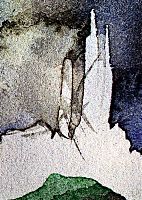
The width and sweep of the bridge, from which the tower-like peaks emerge, is more prominent in the template. The slightly curved sweep of the tower-like peaks is also, at least to me, extremely important and visually enjoys a “firmer footing.”
The constructive lines in the center give the original a slightly playful, constructive touch, which I “noticed” in my interpretation, but whose significance is only now becoming clear to me.
I struggled to maintain sharpness despite the enormous enlargement of the tiny artifact, but I only managed to do so by manipulating filters in the image editing program Gimp. Ultimately, I was satisfied with the result, although I regretted that the fibers of the paper could no longer be preserved very authentically in the enlargement. After the watercolor interpretation, however, it became clear to me that it is precisely this filtered texture that gives the image its authenticity.
In summary, I must admit that it was only after intensive study of artifact sheet 17.6 from the blue sketchbook that it became clear to me why I chose this particular sheet and prepared it for a giclée print, which you can purchase at an unbeatable price and in excellent quality in my shop malamadita.de . By doing so, you are supporting my work.
